'The only real disaster we've had on our courses,' says Master Distiller Jamie Baxter, 'is when someone put a whole star anise in. It tasted like ouzo.'
What it should have tasted like is gin, as I'm at Baxter's Gin School, which he runs regularly at his distillery, 45 West, in the Leicestershire village of Nanpantan, near Loughborough.
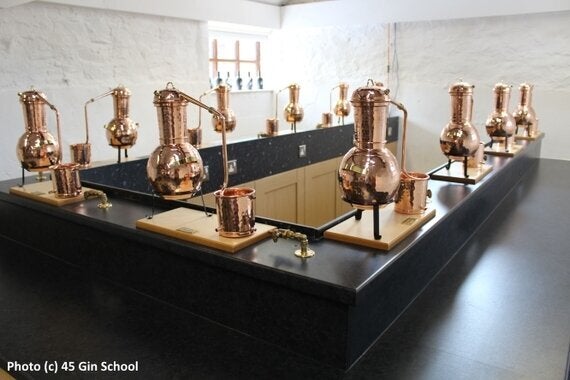
During the course of an afternoon, participants take a tour of the distillery, learn how Baxter makes his gin, and then face the challenge of coming up with a recipe for their own gin.
If anyone can teach people distilling then Jamie Baxter can, as he's been at the forefront of the UK boom in craft distilling. He produced Chase Vodka for William Chase, the man behind Tyrrell's potato chips. Baxter turned some of the potatoes into a vodka that he wanted whisky drinkers to be able to appreciate, and within 6 months Chase Vodka was voted Best Vodka in the World at San Francisco's International Wine and Spirits Competition. He left Chase to help set up the City of London Distillery, the first new distillery in the City of London for 200 years. After working on other consultancy projects for various distilleries, Baxter started 45 West, where he produces Burleighs Gin.
'Does anyone know what gin is?' he begins by asking today's four students, who include a cocktail waiter, an Italian winemaker and an engineer with a liking for craft beer and a curiosity about craft distilling.
'It's flavoured vodka,' says the engineer.
'That's what you say when you really want to annoy a gin distiller,' says Baxter. 'But basically, yes, you're right. Gin is gin-flavoured vodka or juniper-flavoured vodka.'
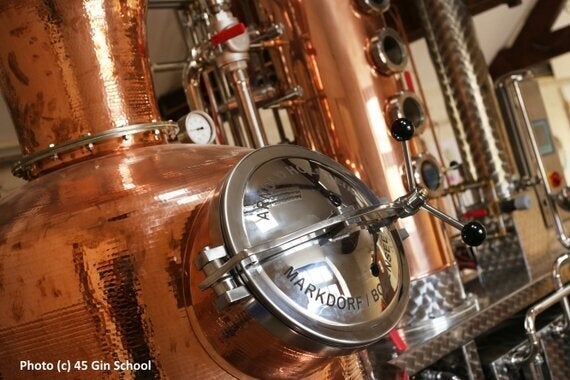
He then shows us his still (above) and explains the very simple process of gin-making. Pure alcohol at 96% is mixed with water and then heated in the still. The vapour rises and passes over the botanicals chosen for the gin, collecting the flavours as it goes. The vapour then travels into a condenser which is chilled by running cold water, and it condenses into a liquid. Because more water burns off than alcohol, the liquid is still too strong for bottling so is mixed with pure water to get it to the desired alcohol strength.
'Ours is the simplest way of making gin. Tanqueray do it this way, so if you're going to copy one of the big boys, copy Tanqueray.'
Jamie then runs through some of the botanicals he uses, including for Burleighs Gin some dandelion and burdock root from a nearby wood: Burleighs Wood.
'We get our juniper from Tuscany,' he tells us, 'and our coriander seeds come from Bulgaria or Morocco. They all go in whole. The only thing I do is peel the oranges. That was the first thing we did this morning - peel all the oranges. That's a job and a half.'
After running through a few more options, he finishes by saying: 'So those are the botanicals - now it's your chance to have a go!'
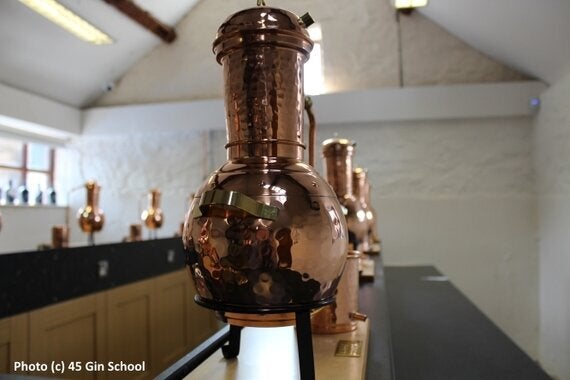
We then move into the kind of classroom (above) I should have had at school. It would have made chemistry a lot more enjoyable. Ten miniature stills, each in gleaming copper, line the benches. Four of them have been readied with the water and alcohol mix, and so with advice from Jamie we're free to concoct our recipe from the dozens of potential ingredients at our disposal.
'There's even some kelp,' Jamie says, 'but I'd steer clear of that. I made something with that one time and it was the worst thing I've ever made in my life. Remember, the only botanical you legally have to have is juniper. Other than that, and some mind of fixative like angelica root, which binds the flavours together, you can do what you like.'
My engineering neighbour is heavily into citrus so is throwing plenty of orange, lemon and grapefruit peel into his gin. As lavender was one of the themes at our wedding, and we recently celebrated our tenth wedding anniversary, I decide to make my wife a lavender gin.
'Go very light on the lavender,' Jamie advises. 'A little goes a long way. No more than about 0.05 grams.'
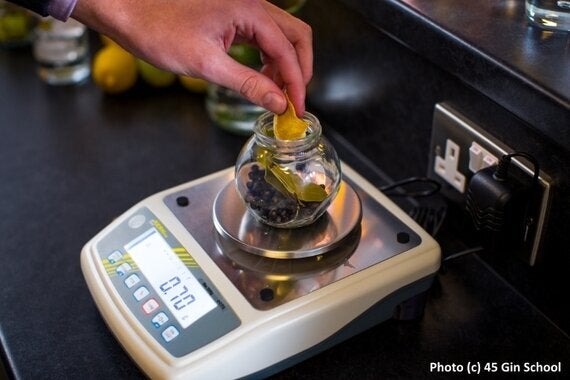
We have digital kitchen scales that weigh our ingredients with incredible accuracy. I put in 0.04 grams of lavender, to be on the safe side. And maybe... what... a little bit of fennel? Lavender and fennel gin? Yes, that sounds pretty fashionable. And a dash of sweet orange peel for the citrus element.
After some discussions and tinkering - and plenty of advice from the Master Distiller himself - we're ready to make gin. We pop the botanicals into the top of the still (below), switch the heating units on, and wait till the spirit starts to drip steadily out. As it slowly drips, Jamie entertains us with a history of gin, packed with funny and fascinating anecdotes.
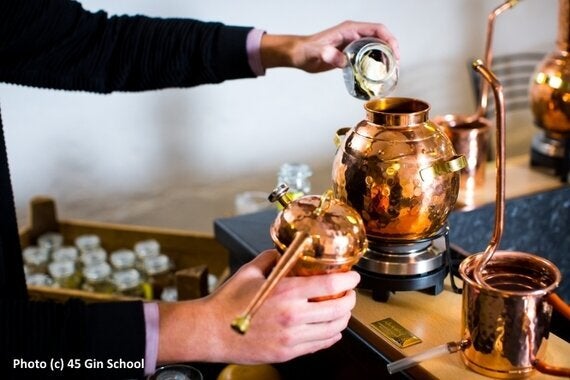
'When you've got 400ml of gin you need to switch off the heat. You only want 400ml as you now need to mix it with purified water, to get the 700ml that will go into the bottle. Obviously if you put more of the distillate in and less water, you'll get a stronger gin. More water and the ABV will be lower. It depends on personal tastes.'
Jamie gives us a gizmo to measure the alcoholic strength. Mine turns out to be an acceptable 44.6% ABV. I'd have preferred 46%, a gin with a bit of a kick to it, but will settle for 44.6%. We then put the gin in a bottle, pop a cork in it, put a metal cap on it using another gizmo, and stick a label on it. It's remarkably simple.
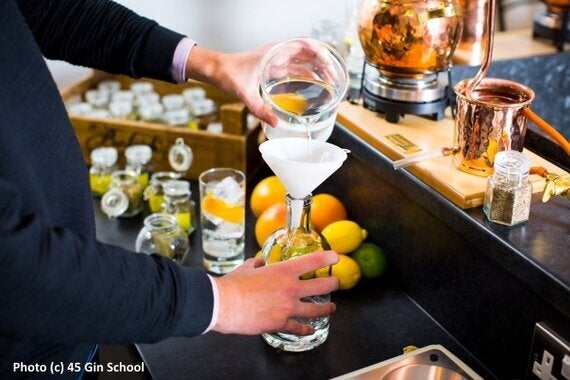
As we're winding up I start to admire the miniature stills. How much do these cost? 'Oh,' says Jamie, 'about a hundred quid.' He sees a certain look in my eye. 'But don't get any ideas. The minute you put alcohol in them, you need a licence. And each of these stills is licensed.'
Oh well. Bang goes thoughts of a new career as a moonshiner.
'And if you find the lavender flavour a little too strong,' Jamie gives me a parting bit of advice, 'just mix it with plain vodka. It will dilute the lavender taste but won't dilute the strength of the gin.'
We never got that kind of advice in chemistry class.
MORE INFORMATION
See the Gin School web page.
ABOUT THE AUTHOR
When he isn't making or drinking gin, Mike Gerrard is writing about it as an award-winning travel and drinks writer. He also publishes The Vodka Guy and Travel Distilled websites, and is an Editorial Staff Writer on the drinks trade magazine, Chilled.